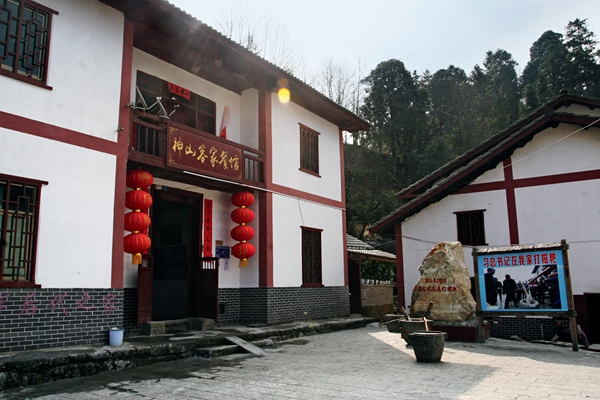Out of Poverty
CHINA TODAY,September 04, 2017 Adjust font size:
ERADICATING poverty, improving people’s livelihood, and lifting 70 million impoverished people out of poverty, is what China aims to achieve by 2020 in building a moderately well-off society in an all-round way. After the assessment of the State Council Leading Group Office of Poverty Alleviation and Development and the approval of the provincial government of Jiangxi, Jinggangshan City officially announced on February 26, 2017 that it is one of the first cities in China to have totally eradicated poverty.
By putting emphasis on targeted poverty alleviation Jianggangshan has explored new models based on practical conditions and gained the city first-hand experience of poverty-relief work.

An organic tea plantation in Jinggangshan.
Zuo Xiufa’s family is a low income household in Shenshan Village, Mao-ping Township in Jinggangshan. Until 2016, when her old adobe house was refurbished, the roof leaked and the walls were cracked.“There are now new tiles on the roof and the walls have been reinforced with ferrocement and coated in mineral varnish. It is now a fine, solid- looking house,” Zuo said.
Low-income households just need to pay RMB 2,000 towards the masonry reinforcement of their adobe homes. The government subsidizes the remaining bulk of the cost. All the village’s dilapidated adobe houses have now been refurbished. Since 2016, the city’s poverty alleviation drive has given priority to comfortable housing, as evident that year in the reinforced masonry of 3,888 old homes and building of new apartments.

A restaurant advertises glutinous rice cakes, a local speciality in Shenshan Village.
For residents who are unable to carry out renovations, such as seniors with no family, or those who are physically or intellectually disabled, the city has commissioned agents to build homes for them. At the end of 2016, 36 impoverished families from remote mountain regions moved into an apartment block constructed in prosperous Xiaqi Township. At the cost of just around RMB 15,000-20,000, each family could live in an apartment of 70-80 sq m and enjoy the same access to public services as regards employment, medical treatment, and education, as native residents.
The city also ensures that registered poverty-stricken families have the means to build their own houses. In addition to receiving a house-building subsidy of RMB 24,500 per family, each household can also apply for a maximum loan of RMB 50,000 in constructing their own houses.